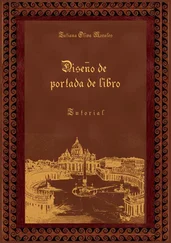Oskar Andreasson - Iptables Tutorial 1.2.2
Здесь есть возможность читать онлайн «Oskar Andreasson - Iptables Tutorial 1.2.2» весь текст электронной книги совершенно бесплатно (целиком полную версию без сокращений). В некоторых случаях можно слушать аудио, скачать через торрент в формате fb2 и присутствует краткое содержание. Жанр: Интернет, на русском языке. Описание произведения, (предисловие) а так же отзывы посетителей доступны на портале библиотеки ЛибКат.
- Название:Iptables Tutorial 1.2.2
- Автор:
- Жанр:
- Год:неизвестен
- ISBN:нет данных
- Рейтинг книги:4 / 5. Голосов: 1
-
Избранное:Добавить в избранное
- Отзывы:
-
Ваша оценка:
- 80
- 1
- 2
- 3
- 4
- 5
Iptables Tutorial 1.2.2: краткое содержание, описание и аннотация
Предлагаем к чтению аннотацию, описание, краткое содержание или предисловие (зависит от того, что написал сам автор книги «Iptables Tutorial 1.2.2»). Если вы не нашли необходимую информацию о книге — напишите в комментариях, мы постараемся отыскать её.
Iptables Tutorial 1.2.2 — читать онлайн бесплатно полную книгу (весь текст) целиком
Ниже представлен текст книги, разбитый по страницам. Система сохранения места последней прочитанной страницы, позволяет с удобством читать онлайн бесплатно книгу «Iptables Tutorial 1.2.2», без необходимости каждый раз заново искать на чём Вы остановились. Поставьте закладку, и сможете в любой момент перейти на страницу, на которой закончили чтение.
Интервал:
Закладка:
The ERROR chunk is sent to inform the other peer of any problems within the current stream. Each ERROR chunk can contain one or more Error Causes, which are more specifically detailed in the RFC 2960 - Stream Control Transmission Protocol document. I will not go into further details here than the basic ERROR chunk, since it would be too much information. The ERROR chunk is not fatal in and of itself, but rather details an error that has happened. It may however be used together with an ABORT chunk to inform the peer of the error before killing the connection.
Type - bit 0-7. This value is always set to 9 for ERROR chunks.
Chunk flags - bit 8-15. Not used today. Might be applicable for change. See SCTP Common and generic headers for more information.
Length - bit 16-31. Specifies the length of the chunk in bytes, including all the Error Causes.
Error causes - bit 32-n. Each ERROR chunk may contain one or more Error Causes, which notifies the opposite peer of a problem with the connection. Each Error Cause follows a specific format, as described in the RFC 2960 - Stream Control Transmission Protocol document. We will not go into them here more than to say that they all contain an Cause Code, cause length and cause specific information field. The following Error Causes are possible:
Table 2-2. Error Causes
| Cause Value | Chunk Code |
|---|---|
| 1 | Invalid Stream Identifier |
| 2 | Missing Mandatory Parameter |
| 3 | Stale Cookie Error |
| 4 | Out of Resource |
| 5 | Unresolvable Address |
| 6 | Unrecognized Chunk Type |
| 7 | Invalid Mandatory Parameter |
| 8 | Unrecognized Parameters |
| 9 | No User Data |
| 10 | Cookie Received While Shutting Down |
SCTP HEARTBEAT chunk

The HEARTBEAT chunk is sent by one of the peers to probe and find out if a specific SCTP endpoint address is up. This is sent to the different addresses that was negotiated during the initialization of the association to find out if they are all up.
Type - bit 0-7. The type is always set to 4 for HEARTBEAT chunks.
Chunk flags - bit 8-15. Not used today. Might be applicable for change. See SCTP Common and generic headers for more information.
Length - bit 16-31. The length of the whole chunk, including the Heartbeat Information TLV.
Heartbeat Information TLV - bit 32-n. This is a variable-length parameter as defined inside the RFC 2960 - Stream Control Transmission Protocol document. This is a mandatory parameter for the HEARTBEAT chunks that contains 3 fields, info type = 1, info length and a sender-specific Heartbeat Information parameter. The last field should be a sender-specific information field of some kind, for example a timestamp when the heartbeat was sent and a destination IP address. This is then returned in the HEARTBEAT ACK chunk.
SCTP HEARTBEAT ACK chunk

The HEARTBEAT ACK is used to acknowledge that a HEARTBEAT was received and that the connection is working properly. The chunk is always sent to the same IP address as the request was sent from.
Type - bit 0-7. Always set to 5 for HEARTBEAT ACK chunks.
Chunk flags - bit 8-15. Not used today. Might be applicable for change. See SCTP Common and generic headers for more information.
Chunk length - bit 16-31. The length of the HEARTBEAT ACK chunk including the Heartbeat Information TLV, calculated in bytes.
Heartbeat Information TLV - bit 32-n. This field must contain the Heartbeat Information parameter that was sent in the original HEARTBEAT chunk.
SCTP INIT chunk

The INIT chunk is used to initiate a new association with a destination host, and is the first chunk to be sent by the connecting host. The INIT chunk contains several mandatory fixed length parameters, and some optional variable length parameters. The fixed length mandatory parameters are already in the above headers, and are the Initiate Tag, Advertised Receiver Window Credit, Number of Outbound Streams, Number of Inbound Streams and the Initial TSN parameters. After this comes a couple of optional parameters, they will be listed with the optional parameters paragraph below.
Type - bit 0-7. The type field is always set to 1 for INIT chunks.
Chunk flags - bit 8-15. Not used today. Might be applicable for change. See SCTP Common and generic headers for more information.
Chunk Length - bit 16-31. The chunk length is the length of the whole packet, including everything in the headers, including the optional parameters.
Initiate Tag - bit 32-63. The Initiate Tag is set within the INIT chunk and must be used by the receiver to acknowledge all packets henceforth, within the Verification Tag of the established association. The Initiate Tag may take any value except 0. If the value is 0 anyways, the receiver must react with an ABORT.
Advertised Receiver Window Credit (a_rwnd)- bit 64-95. This is the minimum receiving buffer that the sender of the INIT chunk will allocate for this association, in bytes. This can then be used by the receiver of the a_rwnd, to know how much data it can send out without being SACK'ed. This window should not be lessened, but it might by sending the new a_rwnd in a SACK chunk.
Number of Outbound Streams - bit 96-111. This specifies the maximum number of outbound streams that the connecting host wishes to create to the receiving host. The value must not be 0, and if it is, the receiving host should ABORT the association immediately. There is no negotiation of the minimum number of outbound or inbound streams, it is simply set to the lowest that either host has set in the header.
Number of Inbound Streams - bit 112-127. Specifies the maximum number of inbound connections that the sending peer will allow the receiving host to create in this association. This must not be set to 0, or the receiving host should ABORT the connection. There is no negotiation of the minimum number of outbound or inbound streams, it is simply set to the lowest that either host has set in the header.
Initial TSN - bit 128-159. This value sets the initial Transmit Sequence Number (TSN) that the sender will use when sending data. The field may be set to the same value as the Initiate Tag.
On top of the above mandatory fixed length headers, there are also some optional variable length parameters that might be set, and at least one of the IPv4, IPv6 or Hostname parameters must be set. Only one Hostname may be set, and if a Hostname is set, no IPv4 or IPv6 parameters may be set. Multiple IPv4 and IPv6 parameters may also be set in the same INIT chunk. Also, none of these parameters needs to be set in case the sender only has one address that can be reached, which is where the chunk should be coming from. These parameters are used to set up which addresses may be used to connect to the other end of the association. This is a full list of all the parameters available in the INIT chunk:
Table 2-3. INIT Variable Parameters
| Parameter Name | Status | Type Value |
|---|---|---|
| IPv4 Address | Optional | 5 |
| IPv6 Address | Optional | 6 |
| Cookie Preservative | Optional | 9 |
| Host Name Address | Optional | 11 |
| Supported Address Types | Optional | 12 |
| Reserved for ECN Capable | Optional | 32768 |
Below we describe the three most common Parameters used in the INIT chunk.
Читать дальшеИнтервал:
Закладка:
Похожие книги на «Iptables Tutorial 1.2.2»
Представляем Вашему вниманию похожие книги на «Iptables Tutorial 1.2.2» списком для выбора. Мы отобрали схожую по названию и смыслу литературу в надежде предоставить читателям больше вариантов отыскать новые, интересные, ещё непрочитанные произведения.
Обсуждение, отзывы о книге «Iptables Tutorial 1.2.2» и просто собственные мнения читателей. Оставьте ваши комментарии, напишите, что Вы думаете о произведении, его смысле или главных героях. Укажите что конкретно понравилось, а что нет, и почему Вы так считаете.








